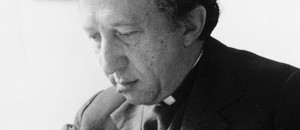 When you attend and pray Holy Mass today you’ll likely notice that Catholics are moving toward Ash Wednesday, March 5. As you know, Ash Wednesday marks the opening of the penitential season, a time of preparation for the annual remembering and living more intensely our faith (anamnesis in technical terms) of the Paschal Mystery of Jesus: His life, death, resurrection and Ascension.
When you attend and pray Holy Mass today you’ll likely notice that Catholics are moving toward Ash Wednesday, March 5. As you know, Ash Wednesday marks the opening of the penitential season, a time of preparation for the annual remembering and living more intensely our faith (anamnesis in technical terms) of the Paschal Mystery of Jesus: His life, death, resurrection and Ascension.
Today, the Catholic Church has various liturgical observances for the Sunday celebration of Mass. The Ordinary Form of the Mass celebrates the 6th Sunday of the Year, the Extraordinary Form of the Mass marks today as Septuagesima Sunday (that is, 70 days before Easter). Our Eastern Catholic sisters and brothers have various ways to mark the preparation for Easter.
Lent has developed over the centuries from the earliest times of Christianity and what is now spoken of as the ashes of penitence and the period of time were given to the Church in the 6th and 7th centuries. The Extraordinary Form of the Mass, for example, maintains three Sundays preceding Ash Wednesday called Septuagesima, Sexagesima, and Quinquagesima, that is respectively, the seventieth, sixtieth, and fiftieth days before Easter Sunday. The Ordinary Form of the Mass has dropped these preparatory Sundays thus isolating the tradition of preparing for Lent seen in the older form of the Mass and what is lived by the Eastern Churches. Nevertheless, these numbers help us to use the Scriptures in an Old Testament typological way. The Old Testament informs, prepares and opens us up to the work of the Messiah. Hence we say that the number seventy recalls for us the seventy years of the Jewish people living in exile in Babylon. Upon hearing this we ask, how do we live in exile from the fullness of communion with God? What is pondered in the sacred Liturgy is pondered in our personal life. The First Sunday of Lent, Quadragesima, is the beginning of the Lenten fast of forty days.
Since most Catholics will hear the gospel Matthew (5:17–37) for the 6th Sunday through the Year, here is a reflection taken from Saint John Chrysostom:
“Christ gave his life for you, and do you hold a grudge against your fellow servant? How then can you approach the table of peace? Your Master did not refuse to undergo every kind of suffering for you, and will you not even forgo your anger? Why is this, when love is the root, the wellspring and the mother of every blessing? ‘He has offered me an outrageous insult’, you say, ‘he has wronged me times without number, he has endangered my life’. Well, what is that? He has not yet crucified you as the Jewish elders crucified the Lord. If you refuse to forgive your neighbor’s offense your heavenly Father will not forgive your sins either. What does your conscience say when you repeat the words: ‘Our Father who art in heaven, hallowed be thy name’, and the rest? Christ went so far as to offer his blood for the salvation of those who shed it. What could you do that would equal that? If you refuse to forgive your enemy you harm not him but yourself…The reason the Son of God came into the world was to reconcile the human race with the Father. As Paul says: ’Now he has reconciled all things to himself, destroying enmity in himself by the cross’. Consequently, as well as coming himself to make peace he also calls us blessed if we do the same, and shares his title with us. ‘Blessed are the peacemakers’, he says, ‘for they shall be called children of God’. So as far as a human being can, you must do what Christ the Son of God did, and become a promoter of peace both for yourself and for your neighbor. Christ calls the peacemaker a child of God. The only good deed he mentions as essential at the time of sacrifice is reconciliation with one’s brother or sister. This shows that of all the virtues the most important his love.”








